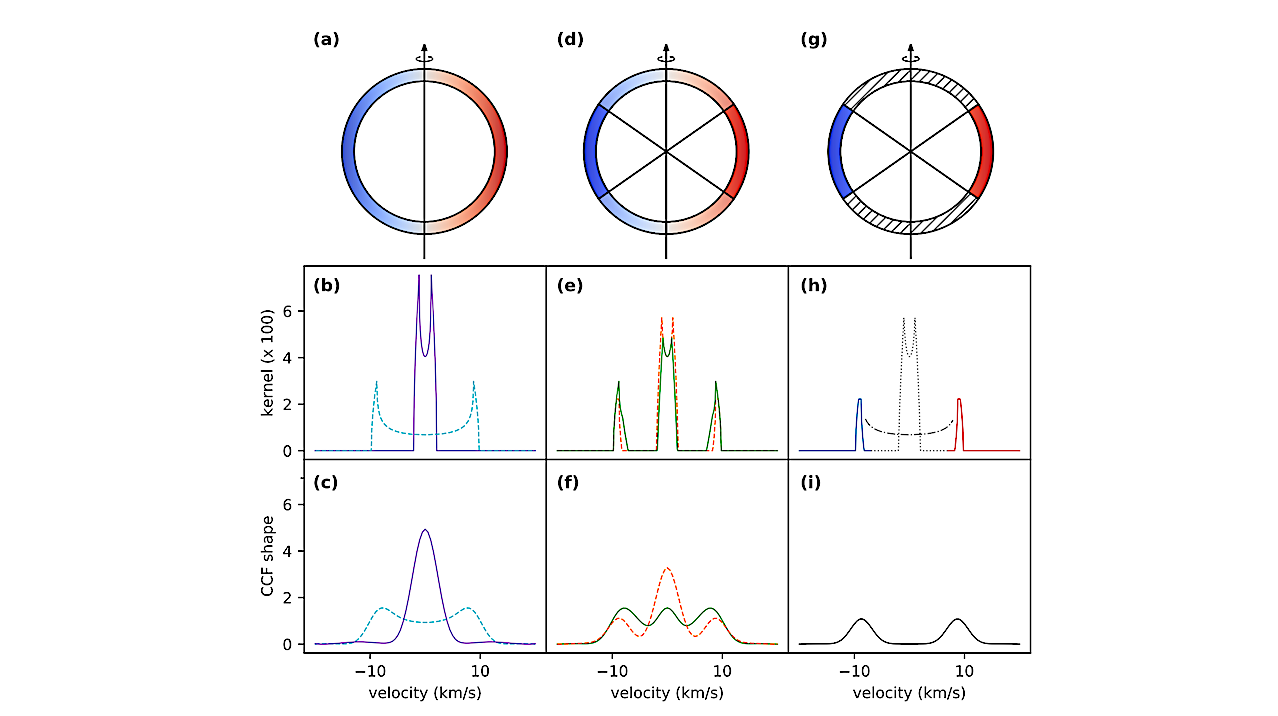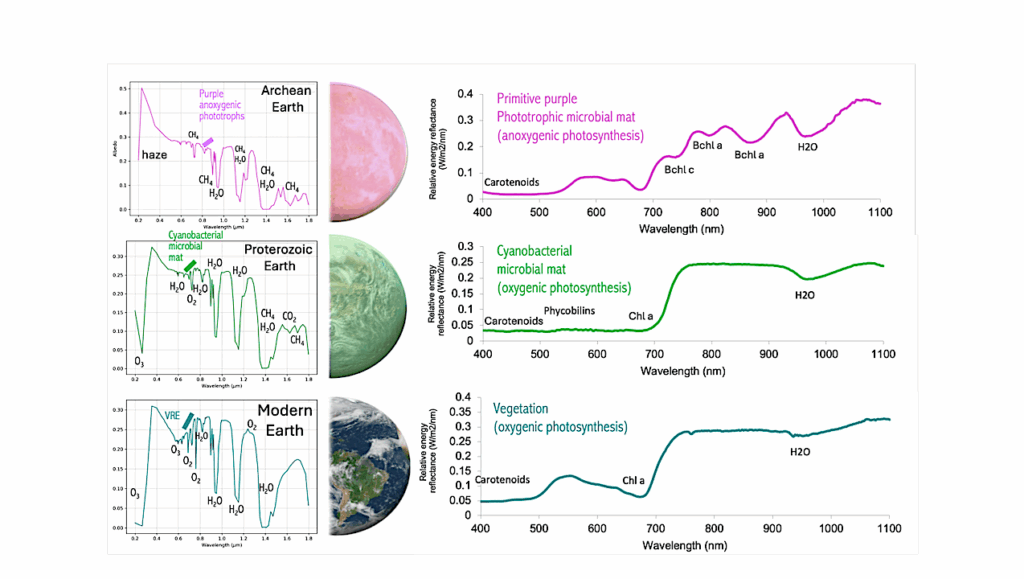CRIRES+ Transmission Spectroscopy of WASP-127b. Detection Of The Resolved Signatures Of A Supersonic Equatorial Jet And Cool Poles In A Hot Planet

General circulation models of gas giant exoplanets predict equatorial jets that drive inhomogeneities across the planetary atmosphere. We studied the transmission spectrum of the hot Jupiter WASP-127b during one transit in the K band with CRIRES+.
Telluric and stellar signals were removed from the data using SYSREM and the planetary signal was investigated using the cross-correlation (CCF) technique. After detecting a spectral signal indicative of atmospheric inhomogeneities, we employed a Bayesian retrieval framework with a 2D modelling approach tailored to address this scenario. We detected strong signals of H2O and CO, which exhibited not one but two distinct CCF peaks.
The double peaked signal can be explained by a supersonic equatorial jet and muted signals at the poles, with the two peaks representing the signals from the planet’s morning and evening terminators, respectively. We calculated an equatorial jet velocity of 7.7±0.2km/s from our retrieved overall equatorial velocity and the planet’s tidally locked rotation, and derive distinct atmospheric properties for the two terminators as well as the polar region.
The evening terminator is found to be hotter than the morning terminator by 175+116−133K and the muted signals from the poles can be explained by significantly lower temperatures or a high cloud deck. Our retrieval yields a solar C/O ratio and metallicity and challenges previous studies of WASP-127b’s atmosphere. The presence of a double peaked signal highlights the importance of accounting for planetary 3D structure during interpretation of atmospheric signals.
The measured supersonic jet velocity and the lack of signal from the polar regions, representing a detection of latitudinal inhomogeneity in a spatially unresolved target, showcases the power of high-resolution transmission spectroscopy for the characterization of global circulation in exoplanets.
L. Nortmann, F. Lesjak, F. Yan, D. Cont, S. Czesla, A. Lavail, A. D. Rains, E. Nagel, L. Boldt-Christmas, A. Hatzes, A. Reiners, N. Piskunov, O. Kochukhov, U. Heiter, D. Shulyak, M. Rengel, U. Seemann
Comments: 18 pages 13 figures, submitted to Astronomy & Astrophysics (A&A)
Subjects: Earth and Planetary Astrophysics (astro-ph.EP)
Cite as: arXiv:2404.12363 [astro-ph.EP] (or arXiv:2404.12363v1 [astro-ph.EP] for this version)
https://doi.org/10.48550/arXiv.2404.12363
Submission history
From: Lisa Nortmann
[v1] Thu, 18 Apr 2024 17:45:49 UTC (4,696 KB)
https://arxiv.org/abs/2404.12363
Astrobiology








